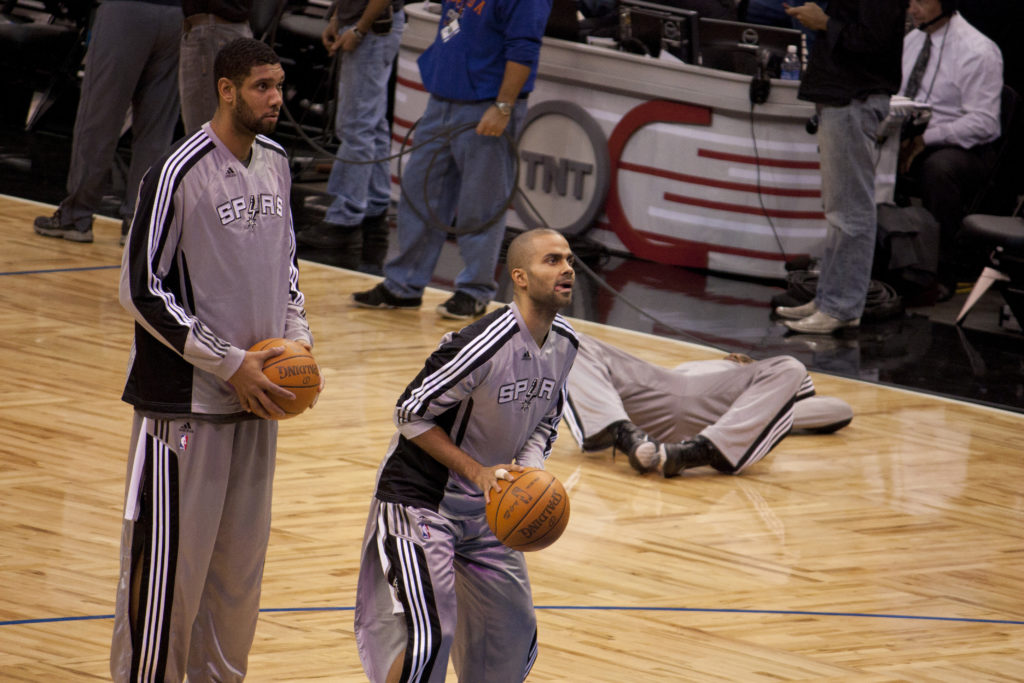In the NBA, coaches, development staff and strength and conditioning coaches talk often about the importance of players “getting their daily vitamins.” This does not pertain to ensuring everyone has their vitamin C or maybe takes a vitamin D tablet due to not getting enough sun in the northern Winter.
“Daily vitamins” is a term coined by the San Antonio Spurs some 10 years ago to describe the specific, individual, and detailed work the coaches must provide to each player to ensure their ongoing progression.
As the Spurs coaching tree continues to permeate throughout the league, the concept of providing regular, individual instruction and ‘touchpoints’ for every player on the roster has become part of the norm.

This may mean a 15-minute individual session on shot technique, a 10-minute session on pivoting or foot pattern or a 5-minute meeting to watch specific vision on areas to improve or work on.
The concept stretches to body management and conditioning and again, is geared around individual instruction or conversation between coach and athlete and focuses on the specific needs of the player.
When coaching in the team setting, there never seems to be enough time and many would argue finding additional time to do this sort of individual communication would be challenging. But by being efficient with meetings, using pre-practice and warm-up time and even when traveling, the results can be significant.
This article talks about how the Atlanta Hawks approach their daily vitamins, with Coach Mike Budenholzer a former Spurs key assistant coach.
While in Australia, coaches rarely get daily access to athletes, the concept of using available windows of time efficiently perhaps has even more value as we continue to look for way to improve and develop our young players.
The Perth Wildcats in the NBL make excellent use of the pre-game warm-up to squeeze in some more “vitamins” for their players. Well in advance of the official game arm-up, the players and coaches are on floor, working on specific skill and positional concepts. This may include ball handling, post skills, shot rhythm and basic concepts in their offensive system.
Revolutionary? No. But to watch the Wildcats (and no doubt other NBL teams) prepare for games and still work on skill development is a great learning observation for coaches at all levels.
Implementing with Junior Athletes
Granted at the junior or club level, there is not the staff or access to facilities to mirror this. But can you use the time prior to team practice better? Can you structure the pre-game warm-up in a way that provides a little more skill or concept development value than simply shooting lay-ups and playing 3 v 2?
Coaches at all levels bemoan the lack of time with their athletes. Time is always such a precious commodity at all levels. By planning and identifying some 10-15 minute windows throughout your practice week or in the hour before a game, the value in skill development and relationships with players will be magnified.
It is not always easy or possible to get on court prior to a practice, especially for junior teams fighting for court space in community facilities. But if there is a window 15 minutes prior to practice where the court is free, rather than catch up on e-mails or chat with your assistant, get on deck, simply rebound for an athlete getting their shot rhythm or spend time working on pivoting with the post player.
This “flightpath coaching” doesn’t have to be high intensity, rather it can be a specific and a rare opportunity for coaches to give something of themselves to an individual, to connect and display genuine interest.
How often do you see a practice session where the athletes are getting casual shots up or doing their own pre-practice routine and the coaches are huddled at the score-table. Granted that conversation is likely to be about practice or the players, but could it be time better spent rebounding or helping a developing big work on base-line pivots?
Similar thinking in the pre-game warm-up. While one group is stretching or foam rolling, have the coaches on floor working some footwork, pick and roll concepts or helping with shot form/rhythm. After six minutes or so, swap groups over and do the same thing. In 12 minutes, all players are stretched, engaged and warm, ready to start the game warm-up in earnest.
Using assistant coaches to drive this concept both prior to practice, perhaps in the 10 minutes after practice, as well as the pre-game will assist with their coaching development. By having 3-4 times each week outside structured practice where a coach teaches specific skills to an athlete will also fast-track their ability to teach.
It also assists with coach-athlete relationships as it allows for meaningful and non-confrontational communication, and provides opportunity for two-way dialogue between player and coach.
It is that relationship building and opportunity to engage that is perhaps the biggest advantage of the “daily vitamins” approach to skill and player development.
With time at such a premium for coaches at all levels, being creative with how we teach, develop and use that available time is always at the forefront of coaches’ minds. Give some thought about how we can all use get our “daily vitamins” and continue to help players develop.




Leave a Reply